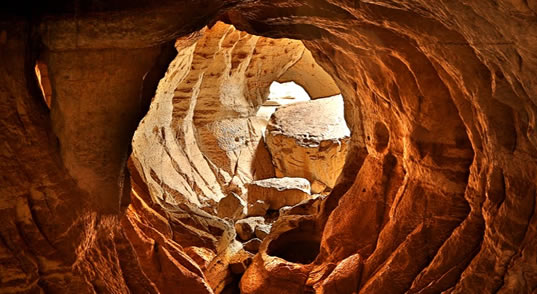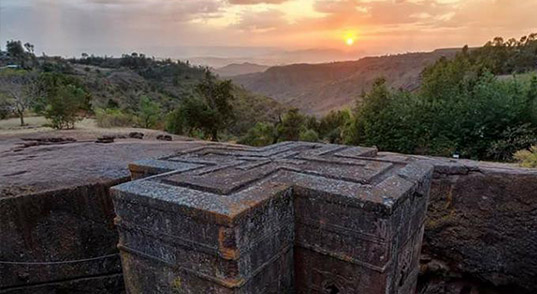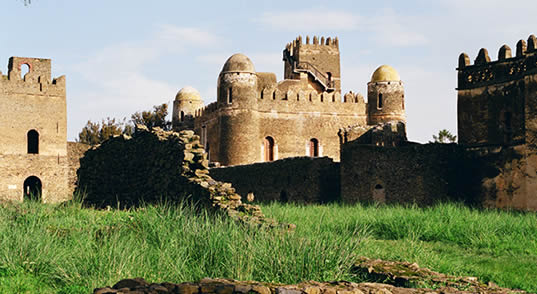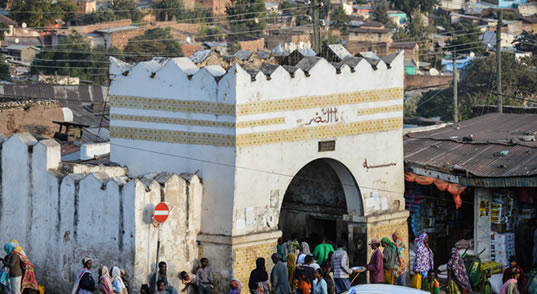


In the heart of Tigrai, the northern region of Ethiopia lays a special massif of mountains called Gheralta Mountains. Gheralta area, with its unique chain of mountains, is the home of the rock churches, some famous for their architecture, ancient paintings and manuscripts and others known for their magnificent view. The Gheralta cluster includes more than 30 structures. Most of the churches date to between the 4th and 6th Centuries.This makes the Gheralta cluster another geographic and artistic point for early Ethiopian Orthodox center next to Aksum.

Not far from Bale Mountains is one of the world's most spectacular and extensive underground caverns: the Sof Omar cave system. The weib River, which sources from the Bale Mountains National Park, penetrates the caves year round,offering a magnificent view to the visitors. Sof Omar is an extraordinary natural phenomenon of breathtaking beauty. At 15.1 kilometers long, Sof Omar Cave is the longest cave in Ethiopia and the largest system of caves in Africa, through which the Weib River flows. It is said that Allah revealed the opening to this limestone cave system to Sheikh Sof Omar in the 12th century. The sheikh and his followers used the caves as a mosque, a purpose to which the caves were well suited as they had been eroded into columns, buttresses, domes, vaults, and pillars - a natural architectural marvel still used as a gathering place by local Muslims.

Aksum is perhaps most famous and well known by the mysterious steles. It is also the alleged resting place of the biblical Ark of the Covenant and the purported home of the legendary Queen of Sheba. The Kingdom of Aksum or Axum was an important trading nation in northeastern Africa, ruled from approximately 100–940 AD. The Empire of Aksum at its height extended across most of present-day Eritrea, northern Ethiopia, Yemen, southern Saudi Arabia and northern Sudan. Axum was the capital city of the empire. The Aksum Empire was named as one of the four great powers of the world along with Persia, Rome, and China. Aksum’s prosperity seems to have peaked in the late 3rd and early 4th centuries AD. Monumental royal tombs were constructed, each marked by a huge monolithic stele carved to represent a multi-storied building. Around the same time, Aksum began to produce its own coinage, with gold used for international trade, and copper and silver for local circulation. In about 340 AD, the Aksumite kingdom formally adopted Christianity under king Ezana (320–360 AD), becoming only the second nation in the world (after Armenia) to do this.

Lalibela is one of Ethiopia's holiest places, dating back to the 12th century. Lalibela town, named after one of Ethiopian ruler, King Lalibela (1181-1221), a member of the Zagwe dynasty. Lalibela is known by the amazing eleven rock hewn churches. Built in the twelfth century, they are still standing in excellent condition. Most consider them as the eighth wonder of the world, and is one of the world heritage sites listed by UNESCO. The famous Lalibela churches carved out from the rock on which they stand. Some lie almost completely hidden in deep trenches, while others stand in open quarried caves. A complex and amazing labyrinth of tunnels and narrow passage ways connects them all. Seeing all of the Lalibela churches are well worth it - particularly during the colourful Ethiopian Christian holidays: Genna, (Ethiopian Christmas) and Timkat (Epiphany).

Gondar is a Royal and ancient historical city of Ethiopia. It is the home of many Emperors and Princess who lead the country from the 12th century to the last decade of the 20th century. The city is located 700 km to the north of Addis Ababa. It was first founded by Emperor Fasilides in 1636 and functioned as the centre of the Ethiopian government until 1864. The city is known by a cluster of medieval castles with unique design and paintings of its churches. These medieval castles (Fasil Ghebbi) are recognized as world heritage sites since 1979.

Harar is a historically fortified city which is located in the eastern part of Ethiopia, 525 km from the capital of Addis Ababa. The city is considered as the “the fourth holy city” of Islam. The city is distinguished with walls surrounding the city, which is built between the 13th and 16th centuries and served as a protective barrier. There were five historic gates, which corresponded to the main roads to the town and also previously served to divide the city into five neighborhoods. Harar Jugol numbers 82 mosques, three of which date from the 10th century is also a cultural heritage with its traditional townhouses with unique interior designs. The Harari people are distinguished by the quality of their handicrafts, including weaving, basket making and book binding.


